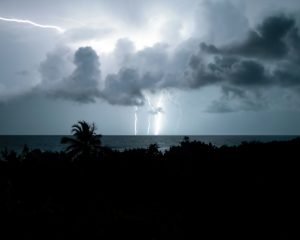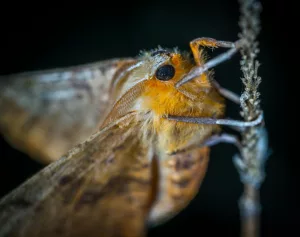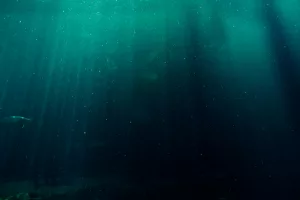Coral reefs are intricate and diverse ecosystems that provide a habitat for a wide array of marine life. They are formed over thousands of years through a complex process involving coral organisms and environmental factors. Coral reefs begin to form when free-floating coral larvae settle on a hard substrate, such as rocks or old coral skeletons. These larvae then release calcium carbonate, which creates a hard exoskeleton around themselves, known as a corallite. As more and more coral polyps settle and grow on top of each other, they form large structures called colonies. Over time, these colonies continue to grow and connect with neighboring colonies, creating the vast structures we know as coral reefs.
Environmental Factors
Several environmental factors play a crucial role in the formation of coral reefs. The most critical factor is the availability of warm, clear, and shallow waters rich in nutrients and sunlight. These conditions are optimal for the photosynthetic algae (zooxanthellae) that live symbiotically within the coral polyps. Additionally, coral reefs thrive in areas with stable water temperatures and salinity levels. Changes in these parameters, such as extreme temperature fluctuations or pollution, can stress the coral and lead to bleaching or even death of the reef.
Water Temperature and Light
Corals thrive in water temperatures ranging from 23 to 29 degrees Celsius (73 to 84 degrees Fahrenheit). Below or above this range, corals experience stress, which can lead to coral bleaching—a phenomenon where corals expel their symbiotic algae, losing color and vital energy sources. Light is equally important because zooxanthellae need sunlight to photosynthesize and provide nutrients to the coral. For this reason, coral reefs are typically found in depths of less than 70 meters (230 feet) where sunlight can penetrate.
In some parts of the world, such as the Red Sea, corals have adapted to withstand slightly higher temperatures due to local conditions, demonstrating the remarkable adaptability of these organisms. However, such examples are limited, and the majority of coral reefs remain highly sensitive to temperature changes.
Water Clarity and Nutrient Levels
Clear water allows sunlight to reach the zooxanthellae, which is crucial for photosynthesis. However, water clarity can be compromised by sedimentation or nutrient pollution. Excessive nutrients can lead to algal blooms that block sunlight and outcompete corals for space. Thus, maintaining a delicate balance of nutrients is essential for reef health.
In areas where deforestation or poor land management occurs, increased runoff can carry sediments and nutrients into the ocean, significantly impacting nearby coral reefs. Implementing better land use practices, such as reforestation and sustainable agriculture, can mitigate these effects.
Types of Coral Reefs
Coral reefs come in various forms, each with unique characteristics and formation processes. Understanding these types can provide insight into the adaptability and diversity of coral ecosystems.
Fringing Reefs
Fringing reefs are the most common type of reef and develop directly along the shoreline. They are separated from the shore by a shallow lagoon or none at all. These reefs are particularly vulnerable to human activities due to their proximity to land, making them susceptible to sedimentation and pollution.
For example, the fringing reefs around the Hawaiian Islands are impacted by both natural and human-induced factors. Efforts to protect these reefs include regulating coastal development and implementing water quality management programs.
Barrier Reefs
Barrier reefs, such as the Great Barrier Reef in Australia, are located further from the shore, separated by a broader and deeper lagoon. They act as natural barriers, protecting coastlines from waves and storms. Barrier reefs often support a diverse range of marine life due to their size and the range of habitats they offer.
The Belize Barrier Reef, another notable example, is a UNESCO World Heritage site. It showcases the complex interplay between marine biodiversity and human culture, with ongoing conservation efforts focused on mitigating the impacts of climate change and unsustainable fishing practices.
Atolls
Atolls are ring-shaped reefs that form around submerged islands or volcanoes. Over time, the island or volcano erodes or sinks, leaving the coral ring encircling a lagoon. Atolls are commonly found in the Indo-Pacific region and host diverse marine species due to their unique structure.
The Maldives is a prime example of an atoll paradise, consisting of 26 atolls and over 1,000 coral islands. The country’s economy heavily relies on its reefs for tourism and fishing, highlighting the critical need to balance economic development with conservation.
Biodiversity and Ecosystem Services
Coral reefs are often referred to as the “rainforests of the sea” due to their astonishing biodiversity. They support around 25% of all marine species, providing food, shelter, and breeding grounds for countless organisms.
Marine Species and Interactions
Reef fish, mollusks, echinoderms, and crustaceans are among the many species that call coral reefs home. These species engage in complex interactions, such as mutualism and predation, contributing to the dynamic balance of reef ecosystems. For instance, cleaner fish remove parasites from larger fish, benefiting both parties.
In some reef systems, the presence of certain fish species, like parrotfish, plays a crucial role in maintaining coral health by grazing on algae that could otherwise smother corals. Protecting these key species is vital for the overall resilience of the reef ecosystem.
Economic and Cultural Importance
Coral reefs also hold significant economic and cultural value. They attract millions of tourists annually, generating billions in revenue for local economies. Furthermore, they provide food and livelihoods for millions of people worldwide, particularly in coastal communities. Culturally, many indigenous and local communities have deep-rooted connections to coral reefs, relying on them for traditional practices and spiritual beliefs.
In regions like the Caribbean, the economic impact of coral reefs extends to sectors like fishing and pharmaceuticals, where reef organisms are studied for potential medical applications. This underscores the multidimensional importance of these ecosystems.
Threats to Coral Reefs
Despite their resilience, coral reefs face numerous threats, primarily from human activities. Understanding these threats is essential for effective conservation efforts.
Climate Change
Climate change is one of the most significant threats to coral reefs. Rising sea temperatures lead to coral bleaching, while ocean acidification, caused by increased CO2 absorption, weakens coral skeletons. This double-edged threat jeopardizes the structural integrity and survival of coral reefs globally.
One illustrative case is the mass bleaching events witnessed across the Great Barrier Reef in recent years. These events highlight the urgent need for global action to reduce greenhouse gas emissions and limit global warming to protect reef ecosystems.
Pollution and Overfishing
Pollution from agricultural runoff, plastic waste, and sewage disrupts the delicate nutrient balance necessary for coral health. Overfishing depletes key species, disrupting food webs and allowing algae to dominate and suffocate corals. Implementing sustainable fishing practices and reducing pollution are crucial steps in reef conservation.
In Southeast Asia, efforts to combat illegal fishing practices and reduce plastic pollution are gaining momentum, with initiatives like community-based marine protected areas and international agreements aimed at reducing marine litter.
Conservation and Restoration Efforts
Given the alarming rate of coral reef degradation, conservation and restoration efforts are more critical than ever. Scientists, governments, and local communities are working tirelessly to protect these vital ecosystems.
Marine Protected Areas (MPAs)
Establishing MPAs is a proven strategy to safeguard coral reefs. These designated areas restrict human activities, allowing ecosystems to recover and thrive. However, the success of MPAs depends on effective management and enforcement, requiring collaboration among stakeholders.
The Coral Triangle Initiative, encompassing countries like Indonesia and the Philippines, is a prime example of regional cooperation to establish and manage MPAs, aiming to preserve the world’s most biodiverse marine area.
Coral Restoration Projects
Innovative coral restoration projects aim to accelerate reef recovery. Techniques such as coral gardening, where fragments are grown in nurseries before being transplanted to reefs, show promise. Genetic research is also exploring heat-resistant coral strains to enhance resilience against climate change.
Institutions like the Coral Restoration Foundation in Florida are pioneering efforts to restore local reefs by cultivating and replanting thousands of coral fragments. Such projects illustrate the potential for human ingenuity to aid natural recovery processes.
Practical Tips for Individuals
While large-scale efforts are crucial, individuals can also contribute to coral reef conservation.
- Reduce Carbon Footprint: Lowering energy consumption and supporting renewable energy initiatives can help mitigate climate change impacts on coral reefs.
- Practice Responsible Tourism: When visiting reefs, avoid touching corals or disturbing marine life. Choose eco-friendly tour operators committed to sustainable practices.
- Support Reef-friendly Products: Use reef-safe sunscreen and avoid products containing harmful chemicals like oxybenzone and octinoxate, which can damage corals.
- Participate in Local Initiatives: Join or support local conservation groups focusing on reef protection. Community involvement can amplify conservation efforts and raise awareness.
- Educate Others: Sharing knowledge about the importance of coral reefs and the threats they face can inspire more people to take action.
The Future of Coral Reefs
The future of coral reefs hinges on our collective action today. By understanding the complexities of reef formation and the challenges they face, we can make informed decisions to protect these remarkable ecosystems. Through global cooperation and local stewardship, coral reefs can continue to thrive and support the incredible diversity of life they harbor.
Active participation from all sectors of society, including individual efforts to reduce environmental impact and support conservation initiatives, will be integral to the ongoing battle to preserve these vital ecosystems. With continued commitment, innovation, and collaboration, it’s possible to secure a future where coral reefs remain vibrant and resilient, supporting the myriad of life forms that depend on them.



